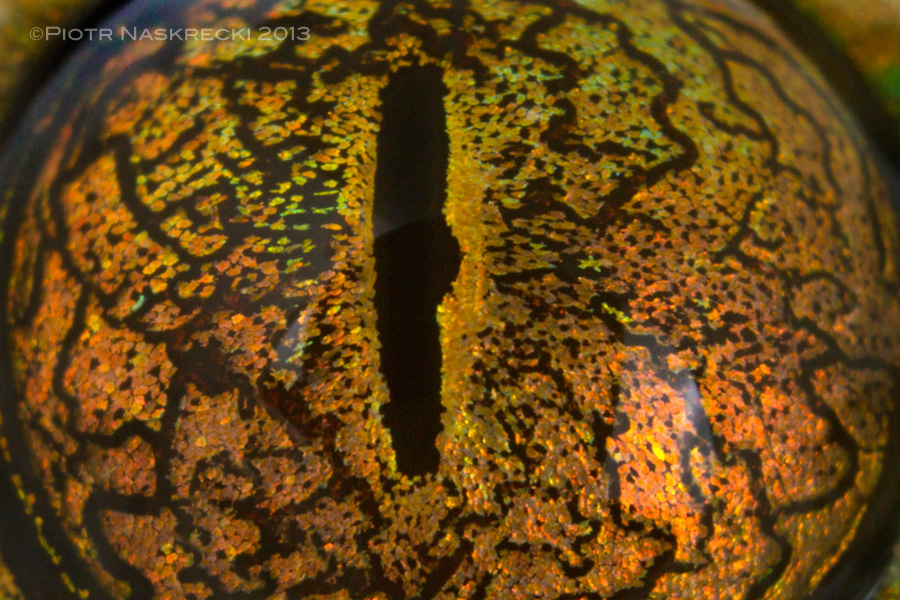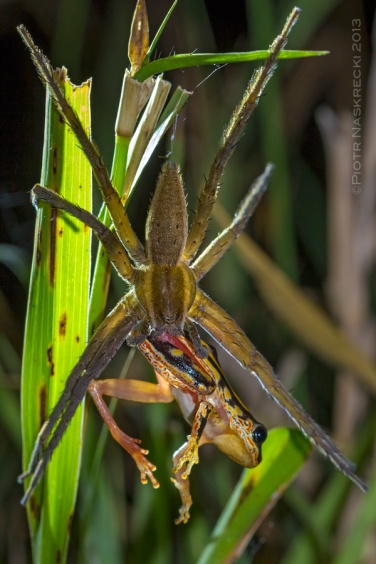
If frogs tell their children scary stories, one of them certainly must be about the Abominable Frogman, a strange, giant creature that comes in the middle of the night to snatch unsuspecting frogs and take them away. And, like so many scary stories, this one would have a kernel of truth in it, for the Frogman does exist and his name is Mark-Oliver (MO) Roedel.
MO is the leading expert on African frog biology and systematics, based at the Museum für Naturkunde in Berlin, and we were extremely fortunate that he was able to join our biodiversity survey of the Cheringoma Plateau in Gorongosa. Every evening, as soon as the sun started to set, MO donned his headlamp and rubber boots, stuffed his pockets with plastic bags and a digital recorder, and headed out for a nightly amphibian hunt. He was a discerning stalker – after over 20 years of experience in Africa MO knows the call of almost every frog on the continent, and was able to identify scores of Gorongosa species without ever laying eyes on them, and only the rarest or unusual calls attracted his full attention. So good was he at recognizing different call patterns that he could pinpoint an unknown, possibly new to science species of a tiny reed frog from a 100 m away, in a cacophony of hundreds of other frogs rattling on at the same time. He would then slowly stalk it through the shallow pond, completely oblivious to the water pouring into his boots which were always an inch too short, and grab the poor animal with a swift flick of his wrist.
As MO’s frog collection continued to grow it was easy to be startled by the sight of what looked like tiny humans, their arms and legs outstretched and fastened with pins, marinating in a tray of formalin on the table of our laboratory tent; the macabre illusion was completed by a small toe tag attached to each specimen. But appearances aside, the small number of specimens that were collected during the survey were sacrificed for a very good reason. Positive identification of frog species is often impossible in the field as it requires detailed examination of minute skeletal characters or other features that cannot be gleaned from a live, wiggling animal. And identifying an organism is the first, most important step in an effort to protect it.

During a visit to the Ministry of Tourism in Maputo I learned of a terrifying possibility of reclassification (degazetting) of some of Mozambique’s national parks to allow for industrial development, mining mostly, to take place within their boundaries. Such downgrading was to be justified by the notion of those areas’ seemingly low biodiversity, the result of both the civil war and subsequent poaching and illegal logging. Without getting into the politics of such potentially disastrous decisions, I am convinced that our survey and every species we documented prove that national parks in Mozambique are bursting with life, often sheltering organisms that can be found nowhere else. Each name of an orchid, a mouse, or a frog that we can add to the list of species living in a national park adds weight to the argument that we must protect such areas at all cost. Luckily, Gorongosa is under no threat of being reclassified, but other, less developed parks may be. After hearing about our Cheringoma survey, the Head of the Department of National Parks and Reserves immediately saw its incredible value, and urged us to do it in all national parks in Mozambique.

Some of the frogs collected by MO may turn out to be new to science. We found a gorgeous, silver and black Kassina deep in limestone caves of Gorongosa, and this species is quite likely undescribed. Some Hyperolius may be new as well, as is an interesting, big-eyed Leptopelis. Each is a potential endemic, and thus a strong argument for Gorongosa’s protected status. All in all, MO and the rest of the herpetological team documented 33 species of frogs, more than tripling the number of species of amphibians known from the park. And thus the bad news is that the Abominable Frogman does exist and sneaks up on frogs at night. But he is actually their best friend and defender.


MO just told me about this cool blogpost. Thanks. We try to convince him to blog for the museum, but obviously he is so busy in the field :-) Really nice article.
Reblogged this on Mark Solock Blog.
Piotr
Well Mozambique is not alone in invading its national parks for the sake of industry. In Queensland (dubbed the “Smart State”) the conservative government has just agreed to allow grazing in some national parks. At the same time the minister in charge of parks chastised the “greenies” for being so short-sighted as to object. He said the cattle eat the pest Buffel Grass, Cenchrus ciliaris, and we should be grateful for that. What he didn’t say was that those same cattle spread the seed of the grass and that Buffel Grass was actually introduced by the cattle industry itself to improve pasture. The “Smart State”.
And New South Wales, with another conservative government, is going to allow hunting in its national parks.
None of this makes sense to me. The future is being sacrificed in the short-term for financial gain.
Dave Rentz
Great exciting work for you fortunate people.
Piotr, you kill me in this way.. I’d like to be there rather than here now… Impressive one that one of the Dolomedes catching the Hyperolius
Another fantastic post! Hopefully the head of Department of National Parks and Reserves will send a copy of your “frog poster” to the powers that be in Mozambique.
Nice post about one of those weird frog people! I especially like the spider predation pic.